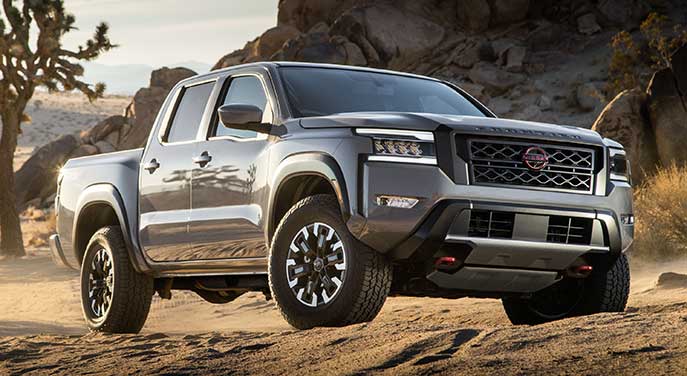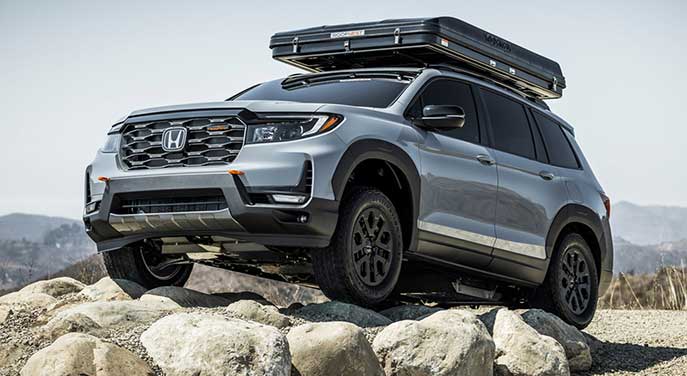 It’s that time of year again: car manufacturers are introducing their new and refreshed models for the coming year. Some really are new; others merely breathed upon and updated.
It’s that time of year again: car manufacturers are introducing their new and refreshed models for the coming year. Some really are new; others merely breathed upon and updated.
Falling into the updated category is the latest iteration of Honda’s Passport SUV. For 2022, it gets new exterior styling that Honda is describing as “bold,” plus a revised torque management system and an HPD (Honda Performance Development) edition.
There will also be an all-new Trailsport model for the coming year. It will offer enhanced off-road capability, distinct exterior badging, interior logo embroidery and, my personal favourite, a heated windshield wiper parking position to keep the wipers from freezing up in frigid weather.
Power, as usual, is provided by a V6 engine, which in this configuration displaces 3.5 litres and develops 280 horsepower with 262 foot-pounds of torque. It’s mated to a nine-speed transmission and comes with all-wheel drive as standard. Other updates include “tougher looking” alloy wheels, a rear passenger seatbelt reminder warning and restyled ambient lighting.
Honda also wants us to know that we can expect future upgrades for the Passport in the form of off-road-tuned suspension and more aggressive tires.
 The Passport isn’t the only news from Honda. There’s also a restyled, retuned and upgraded RDX waiting in the wings. Among other things, it will feature revamped suspension, expanded colour choices and a more “premium” interior.
The Passport isn’t the only news from Honda. There’s also a restyled, retuned and upgraded RDX waiting in the wings. Among other things, it will feature revamped suspension, expanded colour choices and a more “premium” interior.
It joins an all-new Civic hatchback that should be at dealerships by the time you read this. The new hatchback will be aimed at “young active” buyers and comes with a “simple” interior design, short-throw gearbox and either a 2.0- or 1.5-litre engine. Prices will start at $28,000 – not exactly in the ballpark for most younger buyers.
Nissan has announced its pricing structure for the 2002 Frontier pickup. With a 310-horsepower V6 engine, nine-speed transmission, four-wheel drive and a six-foot bed, the Frontier comes with either a King Cab or slightly larger Crew Cab body configuration. For 2022, it will start at just $39,998 for the S model, going up to $49,498 for a Crew Cab Pro-4X Luxury model.
Nissan will also be releasing a limited number of the T-Spec edition of its GT-R supercar. Only 718 of these will be built, and they will feature a hand-built, twin-turbo, 3.8-litre V6 that pumps out some 565 horsepower through a six-speed gearbox and a rear axle-bias all-wheel-drive system. It joins the equally potent NISMO GT-R Special Edition and will have a starting price of $162,498. The NISMO version, meanwhile, will start at just under $280,000 – $279,498, to be precise.
Back here on Earth, Subaru is set to debut an all-new WRX. With a turbocharged flat-four engine and a six-speed transmission, this generation of the all-wheel-drive WRX will pump out 271 horsepower and 258-foot pounds of torque.
According to Subaru, “responsiveness and acceleration are both improved compared to the outgoing generation” of the WRX.
It will also benefit from a stiffened chassis, track-tuned suspension, and new front suspension geometry, among other things. Subaru has also slightly restyled the 2022 WRX, with a front grille treatment, hood scoop, and lightweight aluminum front fenders. Says Subaru: “Once you’re in, you’ll never want out.”
Mitsubishi, meanwhile, recently announced that its 2022 edition of the Outlander has garnered a Top Safety Pick award from the Insurance Institute for Highway Safety (IIHS). Here’s the twist: the 2021 version of the Outlander would also have received this award but the IIHS didn’t like its headlight system. So if you own a 2021 Outlander, you can take it in for a minor adjustment and your vehicle will then be considered a top safety choice, just like the 2022 model.
Last but not least, Mazda has launched an all-electric version of its MX-30 compact SUV. At this point, it’s only available in B.C. and Quebec, but that’s bound to change. With a 143-horsepower electric motor and a lithium-ion battery pack, it will have a 160-km range and can be charged from a 20 per cent battery level to 80 per cent in approximately 36 minutes with a fast charger. A typical plug-in household current recharge will take about 14 hours.
Ted Laturnus has been an automotive journalist since 1976. He was named Canadian Automobile Journalist of the Year twice and is past president of the Automobile Journalists Association of Canada (AJAC). For interview requests, click here.
The views, opinions and positions expressed by columnists and contributors are the authors’ alone. They do not inherently or expressly reflect the views, opinions and/or positions of our publication.
© Troy Media
Troy Media is an editorial content provider to media outlets and its own hosted community news outlets across Canada.



